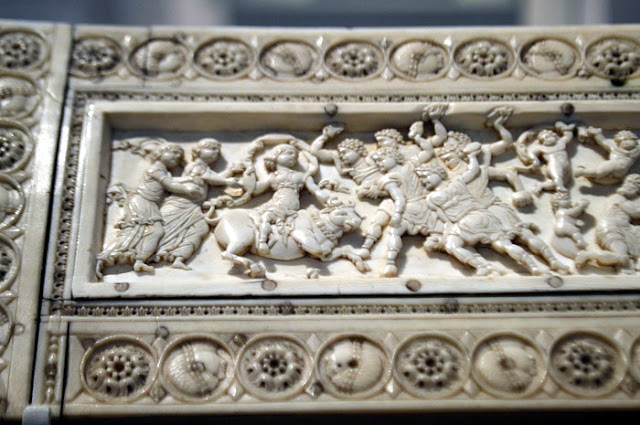The Veroli Casket
 |
| Overview of Casket |
I’m not entirely sure
what it is about ivory carving that I find so attractive, but put me near a
well-made example of the art and I start to drool (I’d like to pretend that the
drooling was only intellectual, but there may be a physical component too). I
do think that part of the attraction must be a reciprocating force to my abhorrence
for modern ivory hunting – the ugliness and repugnance of how the material was
gathered creating a counterpoint for the beauty of the finished product … and an
appreciation of the degree of cognitive dissonance required to reconcile the
two positions.
In any event, this is
considered to be the finest surviving example of ivory carving to have come
from Constantinople and dates to the period from 950-1000 AD. The underlying box
is of wood, overlain with plaques of both ivory and bone. Close examination
reveals that it still retains traces of painted and gilded decoration. Although
it is not clear how, the piece ended up in the cathedral at Veroli in Italy. It
has been suggested that, given the quality of the piece, it was made for
someone close to the Imperial Court of Constantinople and may have been used to
hold scent bottles or as a jewellery box.
 |
| Detail of casket lid, showing Jupiter in the guise of a bull abducting Europa |
The exquisitely crafted
panels portray scenes from classical mythology. The lid shows the Rape of
Europa, while the front panels depict incidents from the stories of Bellerophon
and Iphigenia.




Comments
Post a Comment